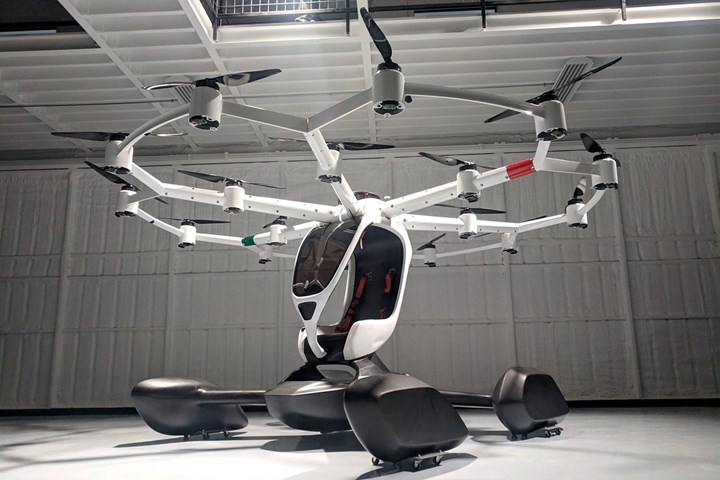LIFT Aircraft’s HEXA is awarded Phase 3 contract for Agility Prime program
The rigorous program will continue experimentation and flight testing of the composite eVTOL aircraft, closely following behind U.S. eVTOL developers like Joby, Archer and Beta Technologies.

Photo Credit: LIFT Aircraft
According to announcements made by FLYING Magazine and eVTOL Insights, the U.S. Air Force (USAF, Washington, D.C., U.S.) has awarded LIFT Aircraft (Austin, Texas, U.S.) a Phase 3 contract through USAF’s Agility Prime program, to continue experimentation and flight testing of HEXA, LIFT’s all-electric, composites-intensive single-seat eVTOL aircraft. LIFT Aircraft joins several other U.S. eVTOL developers that have Agility Prime military contracts, including Joby Aviation (Santa Cruz, Calif., U.S.), Beta Technologies Beta Technologies (South Burlington, Vt., U.S.) and Archer Aviation Inc. (Palo Alto, Calif., U.S.)
After HEXA receives Federal Aviation Administration (FAA) approval, LIFT Aircraft says its 18-proprotor, amphibious eVTOL will not require a pilot’s certificate to fly, per FAA FAR Part 103. Currently, the aircraft has already received initial military airworthiness approval under Agility Prime.
“We want it to be able to serve as a contract vehicle that accelerates HEXA towards fielding not just for the USAF, but the DOD [Department of Defense] and U.S. government in general,” says an April 7 statement from Sterling Alley, technology transition lead and LIFT program manager at Agility Prime. “We have a large number of interested stakeholders that are looking at use-cases for the aircraft and welcome growing the community even further in the future.”
Initial testing under the new contract will take place at Eglin Air Force Base near Destin, Fla., alongside the 96th Test Wing and with the support of Air Force eVTOL initiative, Agility Prime. The fast-paced, rigorous flight testing program will include efforts such as flight envelope expansion, acoustics testing and developmental testing of a modular cargo adaptation for the airframe. This aims to accelerate and further develop HEXA for future public and military applications like emergency first response, personnel transport, base logistics and search-and-rescue missions, the aircraft’s intended use.
Weighing in at 432 pounds, HEXA includes a carbon fiber airframe recently delivered by Qarbon Aerospace Inc. (Red Oak, Texas, U.S.). Designed to land on ground or water, HEXA has four “perimeter floats” that provide “buoyancy and stability” plus a center float constructed of “energy-absorbing foam for hard-landing protection.”
Related Content
-
Composites end markets: Aerospace (2023)
With COVID in the past and passengers flying again, commercial aircraft production is ramping up. The aerocomposites supply chain is busy developing new M&P for an approaching next-generation aircraft program.
-
Forvia brand Faurecia exhibits XL CGH2 tank, cryogenic LH2 storage solution for heavy-duty trucks
Part of its full hydrogen solutions portfolio at IAA Transportation 2022, Faurecia also highlighted sustainable thermoplastic tanks and smart tanks for better safety via structural integrity monitoring.
-
Materials & Processes: Fabrication methods
There are numerous methods for fabricating composite components. Selection of a method for a particular part, therefore, will depend on the materials, the part design and end-use or application. Here's a guide to selection.
















